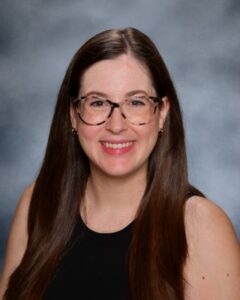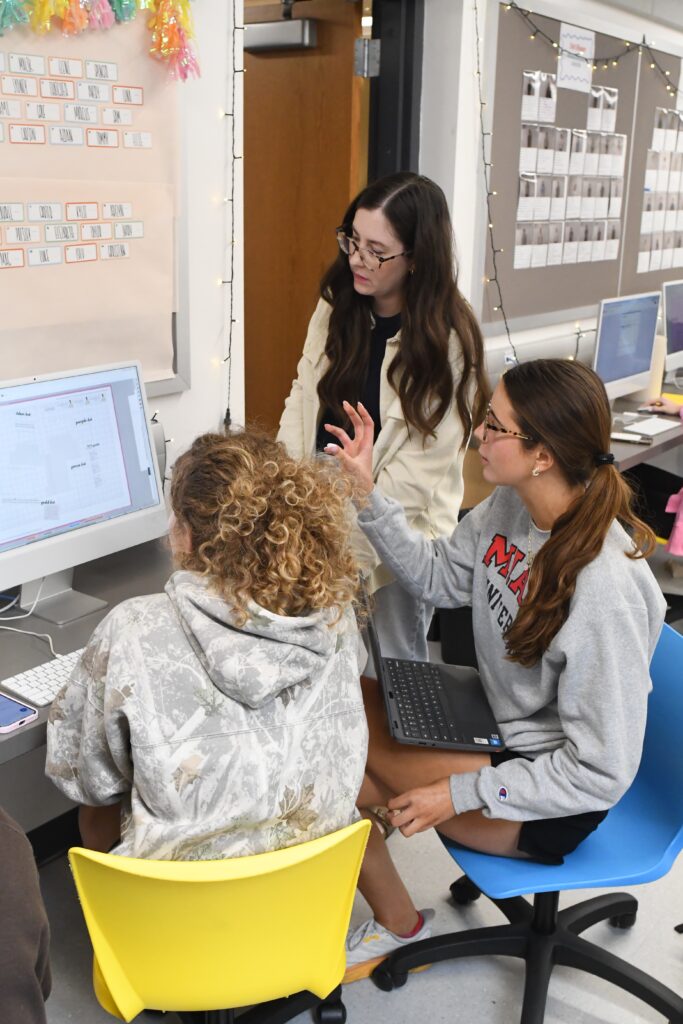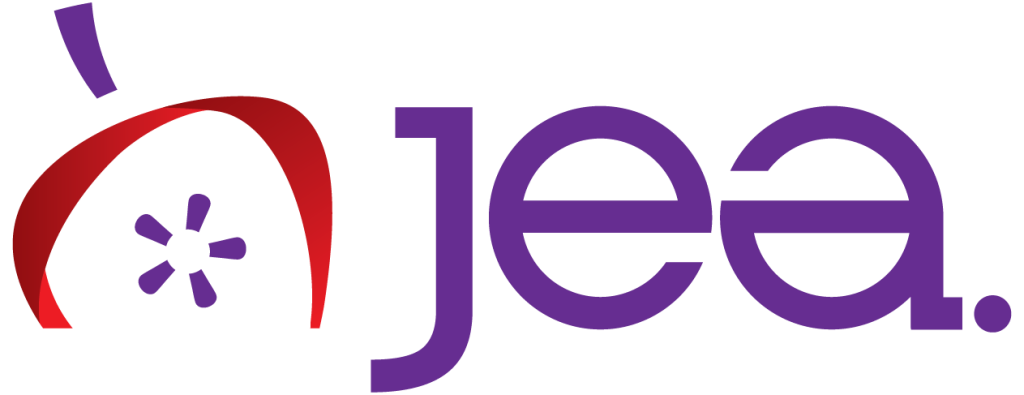Carrie Rapp MJE Project Reflection

Carrie Rapp, MJE, Lindbergh High School
Reflection on my project: "Building Upon Journalistic Foundations in Yearbook"
Project Goals
Research shows students who participate in high school journalism are proven to be more successful in academics, in the job market, and in life. A strong yearbook program helps to improve students’ skills in these areas. The production of a high school yearbook requires advisers and student staff to balance lessons on photography, design, writing, reporting, editing, law/ethics, and sales/marketing with deadlines, scheduling and taking portraits/group photos/sports photos/event photos, budget management, equipment maintenance and checkout and the production of the yearbook. Taking on all of these demands while creating a strong program that allows their students to lead successfully is a task that can quickly overwhelm a new adviser. As an adviser in my twelfth year of teaching yearbook, I thought having a comprehensive website that I could share with new advisers full of resources to help them get started and sustain them throughout the year while they work towards creating a journalistic yearbook would be invaluable.
During my Master’s in Journalism and Mass Communication program at Kent State University, I created a WordPress website with resources and lesson plans to strengthen the journalistic foundation of a yearbook program, and an accompanying editorial policy document, ethical guidelines and sample staff manual, which serves as a tool for existing, established and developing scholastic yearbook programs in order to strengthen their foundation. This site will benefit scholastic journalism advisers by giving them resources to boost their knowledge of curriculum and content, knowledge of instructional environment and assessment. For this project, I updated this site to reflect my additional years of experience and added resources that built upon my original goal of laying a foundation to accomplish my new goal of providing resources and materials to a new adviser looking for help to create a journalistic yearbook. The additional resources will create a fuller, more well-rounded resource that helps carry yearbook advisers through the year after the initial foundation has been set.
Timeline and Overview
When I was hired at Lindbergh High School in 2013, the current English department chair, who had also been the yearbook adviser, had recently accepted the job as assistant principal. When she called me to offer me the job, she explained that yearbook would be part of my course load. As someone who went to school to be an English teacher, this was not something I was necessarily prepared for, but she assured me that she saw the skills in me necessary to take on this role. I had been newspaper staff my senior year of high school, but outside of a year of working with InDesign, owning a DSLR and enjoying working with students, I did not know what awaited me.
In that first year, my EIC Trevor, a previous newspaper staffer, and I both experienced our first year working on the yearbook, together. With the support of my then-assistant principal and a helpful yearbook representative, we made it through that first year — and I was completely hooked.
At this time, our journalism program consisted of one newspaper class, one media tech class, and one yearbook class. Over the course of the next four years, I continued to get my feet underneath me all while growing the program. By 2016, Yearbook had grown to two sections with about 36 students enrolled in the course. In the fall of that year, I decided to get further training and after speaking with local advisers, enrolled in the Journalism and Mass Communication program at Kent State University. Through that program, I was able to fill in the gaps in my understanding, and in 2017, I proposed and began an Intro to Journalism course, which allowed me to focus solely on journalism classes.
With the start of the Intro to Journalism course, the program as a whole has seen incredible growth of which I am so proud. Alongside an incredible coworker who was hired in 2019 and started in broadcast journalism, the Lindbergh High School programs are in a great place. We currently have 35 students enrolled in Broadcast, 12 students enrolled in Newspaper, 104 students enrolled in Sports Broadcast and 58 students enrolled in yearbook. Over 12 years, I have received so much support from advisers on both local and national levesl. I have used the JEA curriculum, borrowed resources from colleagues and honed into what works for my students and my yearbook program.
Although we attend the fall JEA/NSPA convention every year, it has been since 2017 that I have attended a spring convention. In 2024, we were lucky enough to travel to nearby Kansas City with a group of students which was smaller than what we normally take to a fall convention. The personal timing of this convention really invigorated and motivated me. We had submitted the yearbook, were finally in our new classroom space and my youngest would be two in a couple of months. Upon returning from the convention, I applied for my MJE and took on my first JEA mentor. My colleague and I revamped the broadcast curriculum based on sessions and conversations with other advisers and presented two sessions at the fall convention. Refreshed from spending time in the scholastic journalism community, I began looking forward to ways we could continue to grow our program and ways I could impact the local and national journalism community, as well.
Through the process of finding ways to impact the local and national journalism community, specifically taking on a JEA mentor, presenting sessions at national and local conventions and leading an adviser Q&A at our local workshop, I began to understand the value of creating a comprehensive website that I could share with new advisers that was full of resources to help them get started and sustain them throughout the year. Additionally, I participated in on-site critiques in Philadelphia where conversations with editors and advisers left me wishing I had an easily shareable resource. Through these experiences, a common thread came through: new yearbook advisers are looking for support in creating journalistic yearbook programs. Building upon the site (https://yearbookjournalism.wordpress.com/) created during my Masters in Journalism and Mass Communication program at Kent State University, which housed foundational documents for a yearbook program (sample manual, staff handbook and editorial policy), I added the following tabs:

Image of Carrie Rapp, MJE instructing a course at Lindberg High School
2024 Photo by Oliver Barrera, Lindbergh High School (St. Louis, Missouri)
Yearbook Bootcamp
The yearbook bootcamp tab includes a sample calendar outlining how to use the resources over the course of five weeks. Although different schools have a variety of schedules, this is an outline for a new adviser. The first five weeks' resources include a course syllabus, icebreakers, presentations, assignments and documents covering the foundational basics (theme, interviewing, writing, design, photography and law and ethics) for a journalistic yearbook course.
- Alignment with JEA Standard #1 - Covering the key principles of journalism curriculum, the bootcamp lessons cover writing, photography, design, law and ethics.
- Alignment with JEA Standard #2 - Utilizing a five week schedule outlining the skills required for creating a journalistic yearbook supports integrated units of instruction.
Foundation Documents
Under the foundations' document tab, advisers can find a sample publications policy, staff manual and ethical guidelines, as well as links to resources with other examples and considerations. The accompanying presentation also emphasizes the process and encourages advisers to create these documents alongside their editorial boards or staff.
- Alignment with JEA Standard #1 - Asking staffs to examine the journalistic foundation of their programs allows for students to deeply understand the policies which define their program and the legal and ethical guidelines within which they operate.
Yearbook Creation
The yearbook creation tab houses a sample deadline calendar that walks through our traditional five-week cycle. The accompanying documents of a planning sheet, rubric, editor stations, sample ladder, style guide and colophon are essentials to the yearbook spread production cycle.
- Alignment with JEA Standard #1 - The sample production schedule emphasizes process over product and encourages student leadership and learning.
Assignments & Assessments
In order to meet the coverage needs of our yearbook, I have created meaningful assessments that I use with my students throughout the year, including photo and club assignments. As a culminating assignment, my students complete the contest submission assignment.
- Alignment with JEA Standard #5 - The materials in this category land in a variety of categories for assessment and if used can allow advisers and students to use data from assessments to promote student learning.
Recruiting Resources
Recruiting resources contain a presentation that explains each step our staffs take to recruit new and diverse students to our publications, including sample applications, communication outlines, sample video and other recruitment materials.
- Alignment with JEA Standard #3 - Our focus in recruiting students is to develop a diverse student staff in order to improve the diversity of our coverage and understanding of student experience and enhance the journalistic media.
This project began after applying for my MJE certification in April 2024. Between then and now, a couple of experiences impacted the development of this project. First, I took on my first JEA mentee. In working with my mentee, I began aggregating documents and sample calendars and creating explanations that could be beneficial to someone looking for assistance with advising yearbook. This outline was the first place I went to pull useful information for the site. Another experience was applying for the JEA Yearbook Adviser of the Year. Going through that process really allowed me to reflect on where I started and how beneficial it was to me to have mentors and experienced advisers who could provide guidance and resources as a brand-new adviser.
While working on the project, I started by updating the original content on the website, looking over the foundational documents and adding new considerations, like AI policies. My original outline for adding tabs to the website did have to be condensed to have a smaller menu at the top of the site. I reorganized the categories and outlined the site. As I began locating documents, I made decisions on what original documents could be linked versus what needed to be a sample (depending on if the content had student names, passwords, specific details, etc). I shared the site with my local colleagues for feedback and made adjustments, like including the short descriptions to make the linked resources more accessible. I also presented the recruiting resources in Philadelphia with my coworker and received praise that the session was incredibly helpful from several of the attendees.
Outcome & Impact
As a teacher who did not have any training before taking on the role of yearbook adviser, I benefited greatly from mentors, like my yearbook rep and my assistant principal, and from local support, like from fellow advisers in the area. For five years, I worked as the president of our local organization JournalismSTL because going to those monthly meetings, as well as the yearly conference, helped me learn so much. I now attend the JournalismSTL meetings to offer the same community to other advisers and still benefit from the casual professional development opportunities these meetings provide. I also present about adviser tips and avoiding burnout at Varsity Yearbook workshops, present at the national conventions and became a JEA mentor this spring. Through all of these opportunities, I have seen the need for an easily accessible place to house the curriculum that I have curated over the past 12 years to quickly share resources with advisers looking for guidance and resources.
Updating the project has allowed me to reflect on my progress as an adviser since earning my master’s degree and in my role as a JEA mentor. I have been able to share these resources with my mentee and see firsthand how beneficial they are to a new adviser starting with few resources. In order to share my project, I plan to use it as a resource with my current and new JEA mentees. I also plan to make it available to new advisers in the St. Louis area through our local organization JournalismSTL and the state organization MIJA. Additionally, I have presented the recruitment portion of this website with my colleague in Philadelphia this fall and plan to present portions of this project in a session this spring 2025 using the accompanying presentation. This project will allow me to share the curriculum I have been curating each year with advisers looking for guidance and resources. Overall, I believe that curating my resources into a useful site will allow me to share the curriculum I have been curating each year with new advisers who could benefit from the experience and resources.
- Alignment with JEA Standard #6 - The improvement upon the previously created resources and addition of new materials shows evaluation and reflection on my own experiences and learning while the intention to share the resources with others through presentations and mentorship demonstrates collaboration and opportunities for professional development.
